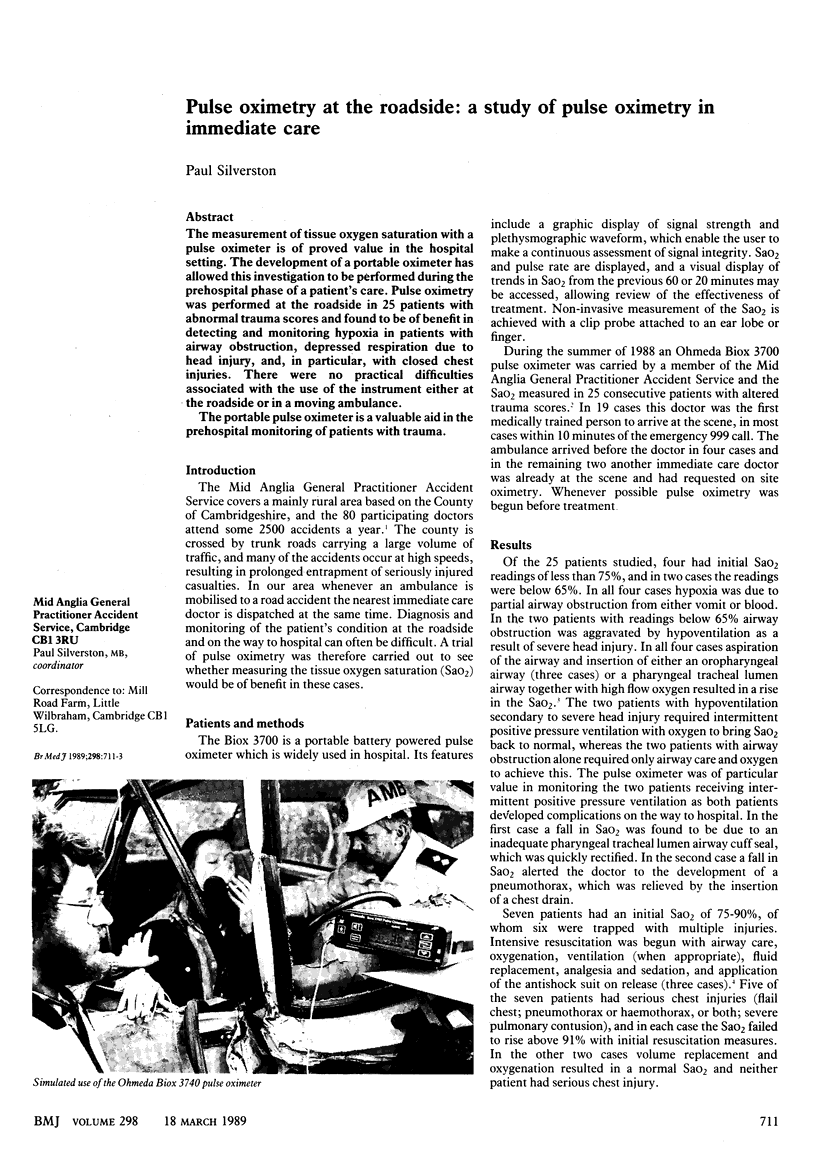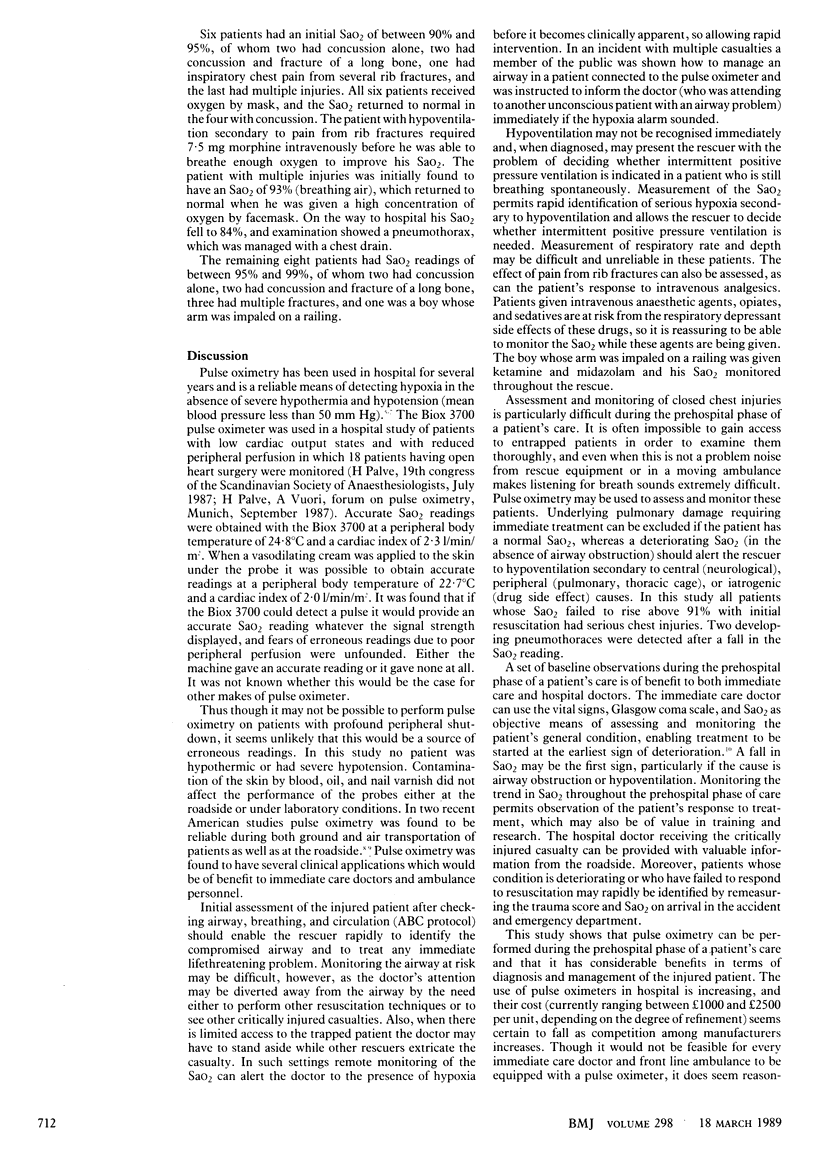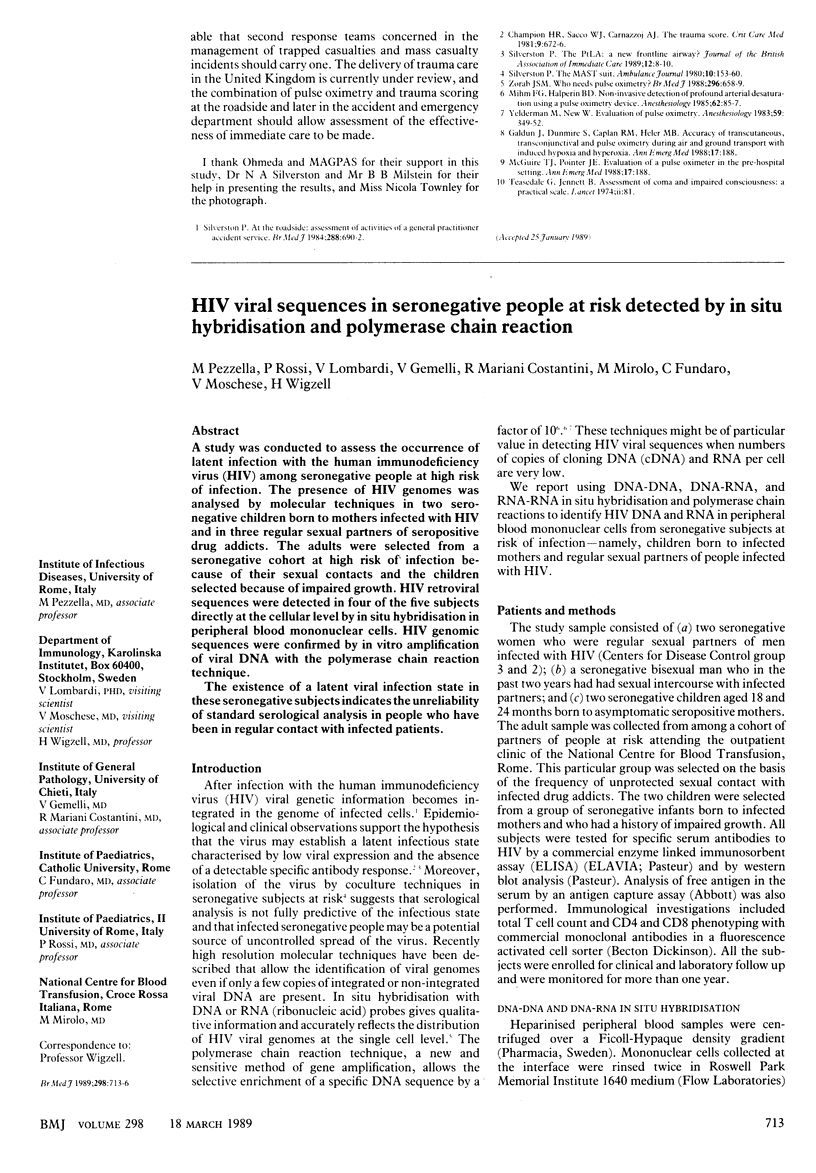Abstract
The measurement of tissue oxygen saturation with a pulse oximeter is of proved value in the hospital setting. The development of a portable oximeter has allowed this investigation to be performed during the prehospital phase of a patient's care. Pulse oximetry was performed at the roadside in 25 patients with abnormal trauma scores and found to be of benefit in detecting and monitoring hypoxia in patients with airway obstruction, depressed respiration due to head injury, and, in particular, with closed chest injuries. There were no practical difficulties associated with the use of the instrument either at the roadside or in a moving ambulance. The portable pulse oximeter is a valuable aid in the prehospital monitoring of patients with trauma.
Full text
PDF


Images in this article
Selected References
These references are in PubMed. This may not be the complete list of references from this article.
- Champion H. R., Sacco W. J., Carnazzo A. J., Copes W., Fouty W. J. Trauma score. Crit Care Med. 1981 Sep;9(9):672–676. doi: 10.1097/00003246-198109000-00015. [DOI] [PubMed] [Google Scholar]
- Yelderman M., New W., Jr Evaluation of pulse oximetry. Anesthesiology. 1983 Oct;59(4):349–352. doi: 10.1097/00000542-198310000-00015. [DOI] [PubMed] [Google Scholar]
- Zorab J. S. Who needs pulse oximetry? Br Med J (Clin Res Ed) 1988 Mar 5;296(6623):658–659. doi: 10.1136/bmj.296.6623.658. [DOI] [PMC free article] [PubMed] [Google Scholar]



